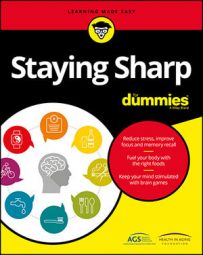Doodling to stay on task
Are you a doodler? Do you find your papers covered in scribbles and scrawls? Well, now scientific research supports your efforts to stave off boredom.A recent study compared the working memory of two groups of people: doodlers and non-doodlers. Both groups were asked to listen to a pre-recorded phone message about a birthday party and remember the names of the people coming. The doodling group remembered more names and places mentioned in the phone message compared to the non-doodlers.
Doodling while listening can be beneficial because it helps you focus and maintain attention instead of tuning out altogether. Doodling isn't a demanding activity, and it acts like a buffer that prevents other activities like daydreaming from interfering with what you have to remember. Doodling also allows you to associate the new information with the visual creation of drawing. So if you're worried that you'll start zoning out during a meeting, grab a pencil!
Drawing to release your creative side
Drawing increases your imagination, which is critical in helping you find creative solutions to problems. So if doodling is natural to you, and you feel you're capable of drawing something a little more demanding than squiggles on the page, go ahead and dive right in.Here are some ideas to get you drawing:
- Make a maze. Start with one thought. It doesn't have to be profound; it can even be an object if that's easier. Write down the thought on a regular sheet of paper. Now think of another thought. How can you connect the two ideas? Keep going until your paper looks like a maze of thoughts and ideas. The maze may not make sense in the beginning. But after a few tries, you'll find that this process becomes easier. And you'll notice that your brain starts making connections between different events more, which can start snowballing your creative process.
- Make a card or scrapbook. The next time you have to buy a card for someone's birthday, why not make one? You have unlimited options for what you can do, from drawing a picture to painting something to using old photos to recreate a precious memory you shared together. Not only is making a card a more meaningful way to share your thoughts, but it also lets you be creative.
Or consider scrapbooking. You can finally do something with all those photos you have lying around, and it's a great way to capture your memories. If most of your photos are digital, note that many online sites let you do virtual scrapbooking and share your pages with family and friends.
- Draw a cartoon. Cartoons or even graphic novels are great ways to journal your thoughts. Instead of trying to find the right words to express how you felt today draw a picture. You may even surprise yourself! If you feel brave, post your cartoons online using a blog or social media and get your friends' feedback. You can also keep cartooning as something you do just for yourself. Whatever you choose, creating this type of diary is a fun way to express your thoughts and release a more creative you.

